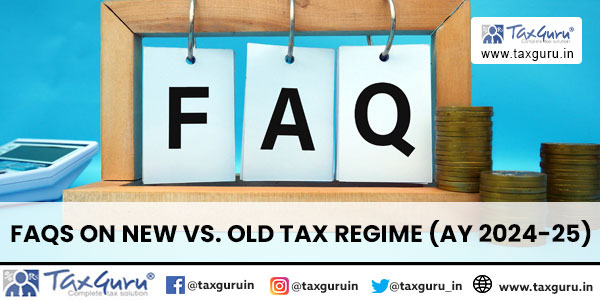Sharva Somayaji
The most fascinating thing about writing about GST is the fact that you can write anything, well, GST is like that work-in-progress sculpture open for interpretation – you can call it Ganesha, you can call it Durga, you can call it anything till it’s completely sculpted (I’m sorry about the secular eyebrows here!!) Secondly any piece in GST law is worth the article for the same reason mentioned above, and this piece here is about few substantial amendments made recently.
GST Annual what?
Annual return – GSTR-9, as the name suggests would have us all imagine that it would be a consolidated form of the only 2 successfully implemented GSTR’s i.e. GSTR-1 & 3B, essentially it meant that till the very recently concluded Council meeting (31st). A simple amendment of words were proposed & made, replacing the words – “supplies declared in returns” to “supplies made” creating total confusion in the naming ceremony of GSTR – 9 – Annual Return, because it wasn’t a compilation of returns anymore.
With this amendment GSTR – 9 now means; consolidating your returns, identifying what’s not identified in your returns, consolidating the identifications & settling dues!!! Ufff! After this herculean task, the dealers also have to get through the certification of reconciliation statement (GSTR – 9C) prescribed on basis of turnover by an eligible Chartered Accountant.
GSTR – 9C, an aptly worded return, I say aptly worded because in an idealistic scenario it is a reconciliation statement alone, the audit of GST returns are taken care at the GSTR – 9 stage itself while matching your mismatches! What’s not on track here is audit is done by the preparer himself defeating the entire Audit syllabus, now you know why the institute isn’t too happy with what’s up with GST!!! Further to add to the miseries of year end GSTR’s, the portal hasn’t come up with its first copy yet, pushing the first round of errors that much far!
Am I late for the waivers of late fee?
Waivers, GST portal has more waivers than SBI right now. The late fee for virtually every return was targeted to be waived off, going by the hassle on portal – a great move! But again the waiver waived off on key words & intricacies of dates! To substantiate – late fee were waived off to dealers who filed their July – Sept 2017 returns during December 22nd – March 31st 2018, to process this for a lay man – GSTR’s filed just around the due dates attracts late fee where as GSTR’s filed by those who broke law for long doesn’t!
The Bright Side
However, it would be unfair to not give any credit to the decisions that seem on right path as of now. To name few;
- The half yearly extension for GSTR – 9, 9A & 9C was the need of the hour especially after the amendments referred to above & unpreparedness of the IT portal.
- The clause wise instructions prescribed for Annual returns & Reconciliation statements of GST are designed unambiguously at most places. However it is not totally free from ambiguity. (Reference of few ambiguous clauses in GSTR – 9C – Clause: 5D – Identification of deemed supply through financials, Clause 12B – whether to show the transitional credit entirely here? Clause 14 – The nexus between break up of expenses & Input tax credit available etc)
- The proposal for rising the threshold limits for registration is a move that’s late but still in the interest of taxpayers.
- Broadening of composition scheme & easing their compliance is one step towards pleasing the dealers. Free accounting software for small sized dealers can be commented upon after it sees the daylight going by the IT trend of GST.
- Proposals for rate reduction for goods & services across businesses.
Boils down to us
Though the negative paragraphs seem bigger and heavier, GST if done as promised can reach consensus & ward off the issues of erstwhile tax laws. Unfortunately GST has been the key player for political war & like a joker in gully cricket, it’s on both sides, The nation has to realize that there’s more to GST & its implementation to see the best version of GST!!






















Your self formulate substantial question of Law under Sub section (3) of Section 117 of CGST Act, read with Section 35(5) and Section 44(2) sub section (13) of Section 2 of the CGST Act and rules 83(10), 80(3) etc., Reconciliation Statement meaning, distinguish Reconciliation Statement, Audit Report, audited annual accounts, audited financial statement, difference between Reconciliation statement and Audit Report and GST Reconciliation Statement – form GSTR 9-C under Central Goods and Service Tax Act and Rule.
( herein after called Act/ Rule)
The following Questions were stands to decide the meaning of reconciliation statement and who has to prepare:
1. Under which section the question of furnishing the reconciliation statement arise?
2. Is any format prescribed for furnishing reconciliation statement? If yes, details?
3. Is any monetary limit prescribed for furnishing reconciliation statement?
4. Define the term Audit under the GST Act ?
5. Explain the meaning of an audited annual accounts?
6. What is Annual return?
7. Whether form GSTR-9 shall furnish along with form GSTR 9-C ?
8. What do you mean Reconciliation Statement?
9. Whether an Audited annual accounts and audited financial statements are one and the same or different kinds?
10. what are the records require to prepare a reconciliation statement?
11. Who has to prepare a reconciliation statement?
12. What do you mean Certify?
13. What are the duties of a Chartered Accountant or Cost Accountant under the Section 35 (5) and in Section 44 (2) ?
14. Define duty differ among GST Practitioner / CA & cost accountant under GST Act ?
15. Whether any other format prescribed for CA/ cost Accountant to perform his duty under Section 35(5) and Section 44(2) of the GST Act ?
Answer to the above Questions:-
Q1.Under which circumstance the question of furnishing the reconciliation- statement arising?
Ans: Central Goods and Service Tax Act, Sub section (5) of Section 35 read with sub rule 3 of Rule 80 warrant every registered person whose aggregate turnover during a financial year exceeds two crore rupees shall get his accounts audited by a Chartered accountant or Cost accountant as the case may be shall furnish electronically the annual return along with (a) copy of the audited annual accounts and (b) a reconciliation statement.
Q2. Is any format prescribed for furnishing reconciliation statement? If yes, details?
Ans: Yes, under sub rule (3) of Rule 80, form GSTR9-C is prescribed.
Q3. Define the term Audit under the GST Act ?
Ans: Sub section (13) of CGST Section 2 defines as follows: Audit means the examination of records, returns and other documents maintained or furnished by the registered person under this Act or the rules made thereafter or under any other law for the time being in force to verify the correctness of turnover declared, taxes paid, refund claimed and input tax credit availed, and to assess his compliance with the provisions of this Act or Rules made thereunder.
Q4. Explain the meaning of audited annual accounts?
Ans: The balance sheet, profit and loss account, auditor’s report, Directors’ report and ancillary statement/notes/documents are called audited annual accounts. In general such valid records are circulating in the general meeting to the registered address of its shareholders
Q5. What is an Annual return?
Ans: Sub section (1) of Section 44 of the CGST Act read with sub rule (1) of CGST Rule 80 described that: every registered person, (other than an ISD, a person paying tax under Section 51 or Sec.52, a casual taxable person and a non- resident taxable person,) shall furnish an annual return for every financial year electronically in such form ( form GSTR- 9 prescribed under sub rule (1) of CGST Rule 80 ) and manner as may be prescribed on or before the 31st day of December following end of such financial year.
Q6. What is an annual report?
Ans: Audited document required by the SEC and sent to a public company’s or mutual fund shareholders at the end of each fiscal year, reporting the financial results for the year.
Q7. Whether form GSTR-9 shall furnish along with form GSTR 9-C ?
Ans: Sub section (2) of Section 44 described that the annual return in form GSTR-9 shall furnish in electronic mode “along with”:-
(a) a copy of the audited annual accounts and
(b) a reconciliation statement in form GSTR-9C.
Q8. What do you mean Reconciliation Statement?
Ans: A reconciliation statement is a document that begins with a company’s own record of an account balance, adds and subtracts reconciling items in a set of additional columns, and then uses these adjustments to arrive at the record of the same account held by a third party. The intention of the reconciliation statements is to provide an independent verification of the veracity of the balance in the company account as well as to clarify the difference between the two version of the account.
The differences between the two accounts are detailed in the reconciliation statement , which makes it easier to determine which of the reconciling items may be invalid and in need of adjustment. Reconciliation statements are an extremely useful tool for both the internal and external auditors. External auditors will likely want to use internally prepared reconciliation statements as part of their auditing procedures. Since the statements allow them to focus on reconciling items, especially in large balance accounts that are materially significant components of the financial statements.
At a minimum, reconciliation statements are useful for noting timing differences in when the same transactions is recorded by both the parties to it. The statements are even more useful for clarifying substantial differences between the amounts recorded for a transaction, which may require adjustments by either party to modify their recorded balances.
Q9. Whether an Audited annual accounts and audited financial statements are one and the same or different kinds?
Ans: Here we have doubt that these terms synonymous? Or is there actually difference in their meanings. The meaning for both terms are similar but not quite the same.
Annual Report: Audited document required by the Securities and Exchange Commission and sent to a public company’s or mutual shareholders at the end of each financial year , reporting the financial results for the year (including the balance sheet, income statement/ profit and loss account, cash flow statement and description of company operations.) and commenting on the outlook for the future.
The financial statements are included in the Annual Report, You may find monthly, quarterly, and annual financial statements, but only one Annual Report.
Financial Statement:-
A written report which quantitatively describes the financial health of a company. This includes an income statement/ profit and loss account and a balance sheet, and often also includes a cash flow statement. Financial statements are usually compiled on a quarter and annual basis.
Q10. What are the records required to prepare a reconciliation statement?
Ans: Sub section (2) of Section 44 of the CGST described that:
‘ reconciling the value of supplies declared in the return furnished for the year with the audited annual financial statements, and such other particulars as may be prescribed.
Q11. Who has to prepare a reconciliation statement?
Ans:
a) Sub- rule 10 of CGST rule 83 described as follows:
“ The goods and service tax practitioner shall –
(a) Prepare the statement with due diligence; and
(b) Affix his digital signature on the statements prepared by him or electronically verify using his credentials.
b) Sub-rule (7) of CGST Rule 83 described as follows:
“ Where a Statement required to be furnished by a registered person has been furnished by the Goods and Service Tax Practitioner authorised by him, a confirmation shall be sought from the registered person over email or SMS and the statement furnished by the goods and service tax practitioner shall be made available to the registered person on the common portal:
Provided that where the registered person fails to respond to the request for confirmation till the last date of furnishing of such statement, it shall be deemed that he has confirmed the statement furnished by the goods and services tax practitioner. “
Q12. What do you mean Certify ?
Ans: Meaning of Certify, Certified:
CGST Rule 80 (3) contain the term “Certified”. In the case of Shimoga oil mills Vs Sri Radhakrishna oil mills, Andhra High Court judgement dated 03.12.1967 AIR 1969 AP 263 disclose the following explanations :
1. As the expression Certify is not defined in the code on the General Clause Act, it is proper to construe the same in the light of their plain ordinary grammatical meaning given in the Dictionary.
2. To certify means as certain attest in an authoritative manner, to give certain information of and certificate means the action of certifying or guaranteeing the truth of anything, attestation ( Oxford English Dictionary).
3. To Certify means make a declaration about in writing under hand or hand and seal, to make attestation either in writing or orally as to the truth or excellence of something ( Standard Dictionary).
4. Certified means to say formally that sth is true or correct.( Oxford English Dictionary).
Q13. What is the duty of a Chartered Accountant or Cost Accountant under Section 35 (5) and in Section 44 (2) ?
Ans: Under the CGST Act, the registered person who is liable under sub section (5) of Section 35 [to furnish form GSTR9 along with form GSTR 9-C ] shall get his accounts audited by a Chartered accountant or cost accountant, in turn the CA / Cost accountant shall prepare and produce copy of the audited annual accounts and audited financial statement to the registered person facilitating to prepare a reconciliation statement and to furnish form GSTR9 electronically.
Q14. How duty differ among GST Practitioner / CA & cost accountant under GST Act ?
Ans: The Chartered Accountant or Cost accountant who got the registered person’s accounts to be audited , audit the accounts as defined under sub section (13) of Section 2 of the Central Goods and Service Tax Act, means examine the records, returns and other documents maintained or furnished by the registered person under this Act or the rules made thereunder or under any other law for the time being in force .
During the course of audit verify the correctness of:
(a) turnover declared,
(b) taxes paid,
(c ) refund claimed and
( d ) input tax credit availed, and to assess his compliance with the provisions of CGST Act or the rules made thereunder.
Q15. Whether any format has been prescribed for CA/ cost Accountant to perform his duty under Section 35(5) and Section 44(2) of the GST Act ?
Ans: So far no specific format has been prescribed for accounts were audited by the Chartered Accountant or Cost accountant when the audit required under sub section (5) of Section 35 and to deliver an audit report inclusively audited financial statement require under subsection (2) of Section44, facilitating to prepare the reconciliation statement and to furnish along with form GSTR9
perfectly worded article